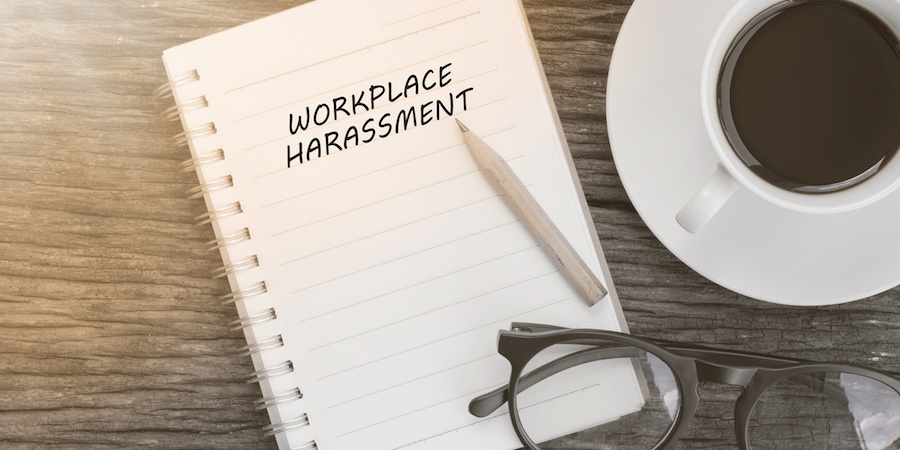You can’t turn on the news without hearing about some form of harassment claim these days, and it can be unsettling to think of the many ways an employer can be held responsible for the behavior of employees and customers.
Leaders abusing positions of power, bullying from a clique of coworkers, and even customers who cross the line can create potential liability for employers.
The Equal Employment Opportunity Commission (EEOC) encourages employers to “take appropriate steps to prevent and correct unlawful harassment," including:
- Clearly communicating that harassing conduct will not be tolerated
- Providing anti-harassment training to managers and employees
- Establishing an effective complaint or grievance process
- Taking immediate and appropriate action when an employee complains
How an employer chooses to address harassment in the workplace is one of the most critical elements for determining liability in legal action.
The practical tips provided here will help you prevent and handle workplace harassment in accordance with the recommendations of both the EEOC and the Wisconsin Department of Workforce Development (DWD).
What Qualifies as Unlawful Workplace Harassment?
Under federal law, harassment is unwelcome conduct that is based on race, color, religion, sex (including pregnancy), national origin, age (40 or older), disability or genetic information.
Wisconsin law expands the protected classes to include ancestry, arrest or conviction record, marital status, sexual orientation, or membership in the military reserve.
Harassing conduct may include, but isn’t limited to offensive jokes, slurs, name calling, physical assaults or threats, intimidation, ridicule or mockery, lewd gestures or displaying offensive cartoons or materials.
Harassment becomes unlawful when:
- Enduring the offensive conduct becomes a condition of continued employment OR
- Conduct is severe or pervasive enough to create a work environment that a reasonable person would consider intimidating, hostile or abusive.
The U.S. Supreme Court adopted the "reasonable person" standard because what’s acceptable to one worker might be offensive and unwelcome to another.
Practical Tips to Help You Follow Recommendations
Communicate your conduct expectations in writing.
- Many employers choose to write conduct policies that have strict limits on harassing behaviors. Rudeness, teasing, and isolated incidents (unless extremely serious) will generally not rise to the level of unlawful, but these behaviors should not be tolerated or allowed to grow to be unlawful.
- Include your harassment policy in your employee handbook and include definitions of harassment, examples of unwelcome behavior or language, and potential consequences for violation of the policy.
- Provide annual anti-harassment training for employees and supervisors.
Train managers to follow an established complaint process.
- A complaint process is only effective if the person who receives the complaint knows what to do with it. Establish protocols that must be followed any time an employee makes a complaint.
- How your company handles the initial complaint sets the foundation for the investigation moving forward. If the complainant feels dismissed, that the claims aren’t being taken seriously or that the process is being mishandled, it sets the scene for potential litigation.
- Document every detail of the initial complaint and confirm with the individual. Outline the next steps in the process and assure the individual that a thorough investigation will be performed.
Promptly investigate every compliant.
- An investigation should only be conducted by those with proper training and experience, so don’t hesitate to hire outside help.
- In addition to interviews, investigators will need to review any relevant communications, such as emails, memos, notes or voicemails. You will want to have a process for IT to provide these communications confidentially.
- If you have Employment Practices Liability Insurance (EPLI) or a rider on your business insurance, contact your agent about any specific investigation requirements listed for your coverage.
Implement protective measures.
- It’s the employer’s responsibility to protect the complainant from retaliation.
- Depending on your work environment and the severity of the claim, it may be necessary to reassign work duties, so the parties don’t have to work together.
- It also might be appropriate to place the accused on paid or unpaid leave or allow the complainant paid time off while the investigation takes place.
Work with HR Professionals.
- Perhaps the most practical action an employer can take to protect an organization from liability is to work with HR professionals.
- A pro not only understands employment laws, but also stays current with compliance updates and HR best practices.
- Partnering with a pro can help you build and maintain a company culture of dignity, professionalism and respect—an environment that naturally discourages harassment.
Looking for more HR tips?
McCloneHR can help! From compliance guidance to payroll processing, our HR team has your team covered! Contact us today to learn more about our HR outsourcing services or download our HR Best Practices Checklist and make sure you’re not missing any key HR responsibilities.



No Comments Yet
Let us know what you think